
About UsThe Numismatic Bibliomania Society is a non-profit organization promoting numismatic literature. For more information please see our web site at coinbooks.org SubscriptionsThose wishing to become new E-Sylum subscribers (or wishing to Unsubscribe) can go to the following web page link MembershipThere is a membership application available on the web site Membership Application To join, print the application and return it with your check to the address printed on the application. Membership is only $15 to addresses in the U.S., $20 for First Class mail, and $25 elsewhere. For those without web access, write to: David M. Sundman, Secretary/TreasurerNumismatic Bibliomania
Society AsylumFor Asylum mailing address changes and other membership questions, contact David at this email address: dsundman@LittletonCoin.com SubmissionsTo submit items for publication in The E-Sylum, just Reply to this message, or write to the Editor at this address: whomren@coinlibrary.com
BUY THE BOOK BEFORE THE COINYou won't regret it! |
- WAYNE'S WORDS: THE E-SYLUM MARCH 22, 2009
- LAKE BOOKS 97TH SALE CLOSES MARCH 24, 2009
- NEW OFFPRINT: PROVIDENCE IN THE LIFE OF JOHN HULL BY MARK VALERI
- BOOK REVIEW: WHITMAN ENCYCLOPEDIA OF COLONIAL AND EARLY AMERICAN COINS
- COIN WORLD LAUNCHES MONTHLY ONLINE NEWSLETTER
- MORE ON LINCOLN: THE IMAGE OF HIS GREATNESS BY FRED REED
- DICK JOHNSON'S REPORT ON THE MARCEL JOVINE SYMPOSIUM
- IN MEMORIAM LAWRENCE J. GENTILE SR. 1937 – 2009
- MORE ON BROCKAGES
- ON THE ILLUSTRATIONS IN WILLEM'S UNITED STATES TRADE DOLLAR BOOK
- DICK JOHNSON ON WOODGRAIN AND HIS ENCYCLOPEDIA OF COIN AND MEDAL TECHNOLOGY
- MAX SPIEGEL ON HIS VISIT TO THE GARRETT COIN VAULT
- MORE ON LITERATURE OF WWI CITY AND STATE MILITARY SERVICE MEDALS
- MORE ON NUMISMATIC TRANSLATIONS
- MORE ON NEW ZEALAND AND AUSTRALIAN TOKEN REFERENCES
- MORE ON THE SMITHSONIAN'S CHARLES BARBER PUERTO RICO SKETCH
- QUERY: 1695 BRAZIL PATTERN JACQUES SCHULMAN SALE PRICE REALIZED SOUGHT
- BRAZILIAN NUMISMATIC BIBLIOGRAPHY
- LOVE TOKENS INSPIRE COMPOSER KATS-CHERNIN
- CHALLENGE COIN USAGE
- THE "SMOKING LIBERTY" QUARTER VARIETY
- TANZANIAN BANKNOTE SHIPMENT GOES ASTRAY
- CARVERS AND COLLECTORS: EXHIBIT OF ANCIENT GEMS AT THE J. PAUL GETTY MUSEUM
- QUICK QUIZ: NAME THIS FAMOUS BIBLIOPHILE
- FEATURED WEB PAGE: MEDIEVAL COINAGE / EARLY DATED COINS
WAYNE'S WORDS: THE E-SYLUM MARCH 22, 2009
 Among our recent subscribers is Peter Bertram. Welcome aboard! We now have 1,223 subscribers.
Among our recent subscribers is Peter Bertram. Welcome aboard! We now have 1,223 subscribers. This week's issue was delayed a day because of technical problems at our mailing list provider. Sorry! Thanks to those of you who wrote in - it's nice to be missed.
We open with a word from Fred Lake, information on a new publication about Massachusetts Mintmaster John Hull, and a review of Dave Bower's new Whitman Encyclopedia of U.S. Colonial Coins.
Other topics include brockages, the Willem Trade Dollar book, and an early Brazilian pattern. To learn about the Evergreen House secret coin vault, read on. Have a great week, everyone!
Wayne Homren
Numismatic Bibliomania Society
LAKE BOOKS 97TH SALE CLOSES MARCH 24, 2009
NEW OFFPRINT: PROVIDENCE IN THE LIFE OF JOHN HULL BY MARK VALERI
Valeri, Mark. Providence in the Life of John Hull: Puritanism and Commerce in Massachusetts Bay, 1650-1680, 2008. 61 p. From the Proceedings for Apr. 2008, pages 55-116. Offprint number: 1035 $15.00 plus $4 shipping and handling.
Jackie Penny (a great numismatic name) of the AAS forwarded the following images and abstract. -Editor
 The very landscape of Boston, through which credit and goods flowed to the rest of New England, symbolized the civic prominence of Hull and his colleagues. They erected and maintained forty wharves through the early eighteenth century, promoted the construction of two waterfront batteries and a seawall, owned twelve shipyards, and employed more than one thousand vessels.
The very landscape of Boston, through which credit and goods flowed to the rest of New England, symbolized the civic prominence of Hull and his colleagues. They erected and maintained forty wharves through the early eighteenth century, promoted the construction of two waterfront batteries and a seawall, owned twelve shipyards, and employed more than one thousand vessels. Boston with its maritime infrastructure, and the number of ships entering and leaving, dwarfed competing New England ports. Merchants’ shops dominated certain districts of the town. Constables rang bells to open and close markets at the Town House and other venues, ordering civic time by commercial opportunity. Merchants built the town’s most elaborate houses, clustered in their own neighborhoods.
They lobbied for and oversaw the construction of roads, bridges, and ferries linking the town to inland villages. Topographical markers signified cultural influence. In Boston, even more so than the metropolis of London, men of commerce and their institutions formed the core of the civic, public order. Success in the commercial system amounted to a public leadership. It brought power to Hull and his colleagues.
 But knotty relationships emerged between merchants and ministers of the second generation in Massachusetts Bay. The tension centered on the disparity between a Puritan piety that eschewed the use of courts to adjudicate between creditors and debtors and the emerging market economy that relied on debt litigation and a legal culture for expansion.
But knotty relationships emerged between merchants and ministers of the second generation in Massachusetts Bay. The tension centered on the disparity between a Puritan piety that eschewed the use of courts to adjudicate between creditors and debtors and the emerging market economy that relied on debt litigation and a legal culture for expansion. Like other devout Boston merchants, John Hull listened to clergy such as Elihu Hubbard, who believed that the fate of New England depended on its civic institutions. Hull’s story represents the importance of theological and moral transformations from within Puritanism—changes in conceptions of the church, providence, and the civic order.
To order this and other AAH offprints on economic history, see www.americanantiquarian.org/Offprints/subjecteh.htm
BOOK REVIEW: WHITMAN ENCYCLOPEDIA OF COLONIAL AND EARLY AMERICAN COINS
 WWCD - What Would Crosby Do? If Sylvester S. Crosby, author of the 1875 classic Early Coins of America were alive and writing his book today, what would he do? Would he produce a book similar to the Whitman Encyclopedia by Q. David Bowers?
WWCD - What Would Crosby Do? If Sylvester S. Crosby, author of the 1875 classic Early Coins of America were alive and writing his book today, what would he do? Would he produce a book similar to the Whitman Encyclopedia by Q. David Bowers? Today's imaging and publishing technologies are far in advance of methods available in 1875, and I'm sure Crosby would approve of the color photos throughout out the book. Bowers and Crosby both illustrated and discussed major varieties as well as the history behind each major coin type.
Would Crosby include prices? His 1875 book didn't, but in his day the coin market was very different, with far fewer transactions and less emphasis on valuation. Crosby's thorough research and writing made it the standard work for over a century. But if it had included prices it would have been obsolete in a couple of years.
I see both pros and cons to including prices. Valuation is a key feature many people look for in coin reference books - I'm sure many more copies of the book will be sold than would have if it hadn't included pricing. In a few (years/months/days) the prices will be obsolete and there will likely be demand for Whitman to publish a new edition, another reason to sell more books.
I'm generally in favor of the inclusion of prices; to me, more information is better, even if it has a short shelf life. And pricing information is useful as a relative guide even when individual prices are the subject of debate. And debate there is - the colonial coin mailing lists and discussion boards lit up when the book came out, with many people criticizing individual prices. One commenter decried the $500 price assigned to what he deemed a $50 coin. Others pointed out prices they thought were too low.
In a field such as early American coinage, where mintages are generally low, the coins are rarely uniform in manufacture, and the collector base is relatively small in comparison to regular issue coinage, is it inevitable that pricing disagreements will ensue.
In the case of very rare pieces, Bowers takes a "just the facts" approach, listing individual recent auction prices for the piece. These citations are a useful compilation of information which can lead the reader to sources of additional information. As for the prices provided by valuations editor Larry Stack, collectors will inevitably debate them; I'm sure every new edition of Whitman's yearly classic Red Book has its pricing detractors.
Would Crosby include more historical information about the coins? He did in his 1875 book, but because Crosby and many other writers have also done so, author Bowers doesn't really have to. It would make a big book much bigger without adding a lot of value; the Whitman Encyclopedia is a useful publication for what it is - a handy one-volume compilation of key information about an often bewildering and multifaceted field. The Breen Encyclopedia and Crosby books are too meaty (and hefty) to carry around coin shows; I think we'll see a new breed of collectors roaming the aisles of coin shows armed with the Whitman book while they shop for colonial coins.
Although long-awaited, the Whitman Encyclopedia doesn't make any of these earlier books obsolete. Bowers states plainly in his introduction that Remarkably, one of the best "reads" of all remains the 1875 work by Crosby, The Early Coins of America. To this I would add the privately-published In Yankee Doodle's Pocket, the 2008 work by Will Nipper reviewed earlier in The E-Sylum.
Here's a suggestion for Whitman - why not buy the rights to Nipper's book and offer it in a boxed set with the Whitman Encyclopedia? The company's marketing clout could bring Nipper's book to a wider audience. The two titles are very complimentary and will soon be standing side-by-side on my colonial shelf. For that matter, why not reprint Crosby's The Early Coins of America and make it a three-book boxed set? Sure, I realize it's easy to make suggestions for someone else's business plan. But no matter - collectors can and should acquire all three works for their libraries, regardless of who publishes them.
I'll leave it to the colonial coin specialists to review the nitty-gritty of the book; several of them have already pointed out various mistakes such as the occasional mislabeled or juxtaposed photos. As a bibliophile my biggest concerns are with the book's paper and images. The glossy paper is nonetheless thin and prone to easy creasing. Thankfully the book is hardcovered, which helps prevent other kinds of damage. The photos, which by necessity are small, also seem to be oddly uniform in color. I've praised Whitman publication photos in other books, but I'm not as impressed with these.
One thing the bibliophile in me appreciates in the inclusion of engravings to open each section; several are taken from an obscure but important early resource - O'Callaghan's 1850 Documentary History of the State of New York.
My favorite part of the book is Dave's Introduction, which is a great first-person account of his interest in the topic of colonial coinage and interactions with all the top collectors and researchers of the last half century. I think E-Sylum readers will appreciate it as well.
I also greatly appreciate Chapter 12, 19th-Century Colonial Copies and Fantasies, which to me is alone reason enough to justify the purchase price of the book. Sections cover the Thomas Wyatt copies of the 1850s, the John Bolen, Alfred Robinson, Montroville Dickeson, and William Idler copies of the 1860s, C. Wyllys Betts' fantasy coins of the 1870s, and other important copies such as the 1860s "New Haven Restrikes" of the Fugio Cent.
All in all, the long wait was worth it - Dave Bowers' latest book is another feather in his cap.
COIN WORLD LAUNCHES MONTHLY ONLINE NEWSLETTER

Welcome to the inaugural issue of the Coin World Newsletter. Our goal is to have this monthly contain the same quality that has made Coin World the hobby's leading news weekly for nearly 50 years.
The premiere issue of our newsletter is focused on some timely information for your safety - how to prevent the robbery and/or theft of your collection. However, if misfortune does strike, we have some sources you can turn to for help. For the history aficionado, there is a tale of a daring daytime robbery at a famous museum. Plus we reach back into our archive and spotlight some of the characters who have sought to rob the U.S. Mint of its treasure.
MORE ON LINCOLN: THE IMAGE OF HIS GREATNESS BY FRED REED
Alan V. Weinberg writes: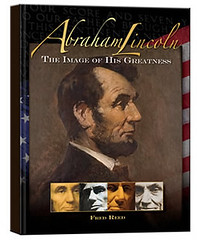 The book is very much numismatically-oriented with a vast array of extremely high quality plates throughout. It's one of the aesthetically most appealing books I've seen. Apparently, from the acknowledgments, author Reed had extensive cooperation from a huge number of sources and collectors, and it shows.
The book is very much numismatically-oriented with a vast array of extremely high quality plates throughout. It's one of the aesthetically most appealing books I've seen. Apparently, from the acknowledgments, author Reed had extensive cooperation from a huge number of sources and collectors, and it shows. This is not just another Lincoln book. In my opinion, it is essential for every numismatic library. The material pictured is just flabbergasting and invariably in superb condition. I was salivating. And the price of $29.95 is a steal as it was printed in the highest quality in China, as are many Whitman books.
Dennis Tucker of Whitman Publishing writes:
DICK JOHNSON'S REPORT ON THE MARCEL JOVINE SYMPOSIUM
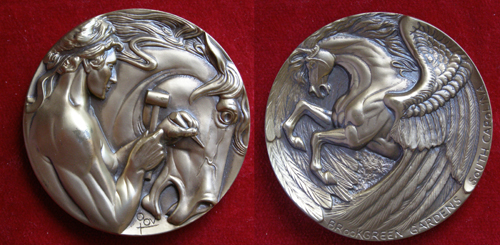
Each of the speakers had known Jovine in their own way. But a similar thread was observed throughout every speech, the report of a friendly, good natured, highly artistic and very creative individual. Artist Jovine's accomplishments were highlighted; for example, not all his 94 coins and medals, two dozen bronzes or many hundred toys could have been illustrated or all mentioned. They could only be sampled.
Jovine's medallic creations were revealed by Donald Scarinci, Dick Johnson, and Alan Stahl, whose paper was read by George Cuhaj. Both Stahl and Cuhaj were members of the committee in 1983 which chose the 125th Anniversary medal of the American Numismatic Society, created by Jovine and considered the most distinctive medallic work of the 20th century.
Hugo Greco, founder of Greco Industries, spoke both as a friend, a fellow native-born Italian, and as a maker of most of Jovine's medallic work. He spoke without notes of their close relationship and admiration of Jovine's magnificent design abilities, craftsmanship and creativeness.
The day's activities was sponsored by the Samuel Dorsky Foundation, which honors Public Monuments and the artists who create them. It is closely affiliated with the National Sculpture Society, whose executive director, Gwen Pier was one of the presenters. Jovine had served two terms as president of the Society.
Master of ceremonies was Donald Martin Reynolds, founder of the Monuments Conservancy. The Conference was held in the Henry Luce Room of the Time & Life Building in New York City. A biographical book on the life of Jovine by Reynolds is planned, with a catalog of the artist's coins and medals by Dick Johnson.
THE BOOK BAZARRE
IN MEMORIAM LAWRENCE J. GENTILE SR. 1937 – 2009
The photo was taken by the Wilsons at the 2008 Baltimore ANA Convention. Larry is on the right and Michael Whelan is on left. They are seated at the YN Table. -Editor
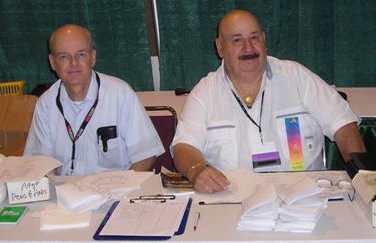
Larry started collecting at an early age and in 1976 he became involved in YN activities. From that time until his passing, Larry lived and breathed helping young collectors to become involved in our hobby. His programs many times ran for over three hours. We watched Larry work at several YN programs he gave at the New York Inc. It was very noticeable at the programs that Young collectors were mesmerized with his presentations. Many of the parents who came also were intrigued with how Larry handled his programs in such an educational and interesting way.
No one did it better than Larry when it came to educating young collectors in our hobby. Larry always had nice gifts for YN’s at his programs, but they had to earn them. He probably spent a lot of his own money traveling to coin shows and buying numismatic items to give away. Besides this, dealers, collectors and coin clubs donated numismatic items for his programs.
Larry Gentile Sr. was one of the most admired and loved numismatists that we have ever known. He will live forever in our prayers and thoughts. Our deepest sympathies to his two daughters and son along with their families and other relatives. We will never forget Larry and will miss greatly his always cheerful greeting and smiling face when our paths crossed. Rest in Peace. With loving affection, John and Nancy Wilson, Ocala, FL Larry Gentile’s Obituary can be found at the below link along with a link for a guest book entry. www.nyjnews.com/obits/Obit1.php?pid=2714509&fulldate=
On a separate note, the Wilsons add:
MORE ON BROCKAGES
Last week Bill Snider asked about an unusual Victoria young head penny brockage. Chick Ambrass writes:Below are images of Bill and Chick's coins side-by-side.
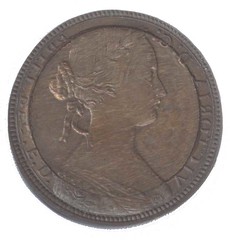
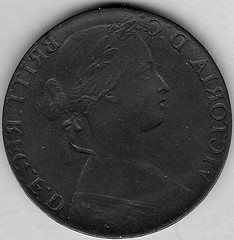
ON THE ILLUSTRATIONS IN WILLEM'S UNITED STATES TRADE DOLLAR BOOK
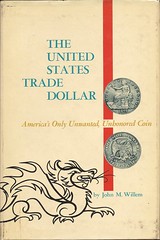 For years I've been reading in booksellers' catalogs that the Second Edition of John Willem's book The United States Trade Dollar, which was published by Whitman in 1965, included better plates than Willem's self-published 1959 edition. I'd just like to set the record straight on this.
For years I've been reading in booksellers' catalogs that the Second Edition of John Willem's book The United States Trade Dollar, which was published by Whitman in 1965, included better plates than Willem's self-published 1959 edition. I'd just like to set the record straight on this.Long before I began reading these book listings I owned only the Whitman edition. Finally, an opportunity came to buy the original from a coin club book auction at a reasonable price. Without really comparing the two, I then donated my Second Edition to the club's next auction. It was only later that I began reading all these reports that the Whitman edition included superior plates, and I kicked myself for making such a mistake.
I recently acquired another copy of the 1965 book, and I can now say with authority that the published reports are baloney. The 1965 edition has fuzzy plates that are obviously second-generation copies of the original. While neither has excellent plates, this is typical of their time frame. I simply don't want booksellers to keep repeating this chestnut. I understand that some corrections and updates were made to the text of the Second Edition, so it may still be superior in that respect. I haven't yet made a side-by-side comparison of the text.
My copy (pictured above) has an original dust jacket. In my experience, these are difficult to find in nice condition. But before I start another unsubstantiated "fact" about the Willem book, what do readers think of that? Who's got another dust-jacketed copy? -Editor
DICK JOHNSON ON WOODGRAIN AND HIS ENCYCLOPEDIA OF COIN AND MEDAL TECHNOLOGY
 Sincere thanks to all eight respondents to my E-Sylum item on "woodgrain." The term I found used in the blogs was new to me. I feel properly castigated that I overlooked a term that is not new, but has been in wide use among numismatists -- for how long? -- over many decades. Where have I been?
Sincere thanks to all eight respondents to my E-Sylum item on "woodgrain." The term I found used in the blogs was new to me. I feel properly castigated that I overlooked a term that is not new, but has been in wide use among numismatists -- for how long? -- over many decades. Where have I been? I have been casting a net now for 40 years gathering terms that I feel are unique to numismatics, not everyday English words, but terms a serious numismatist should be aware of, and I have recorded their numismatic meaning. The count now stands at 1,835 such terms. Still not ready for publication, but getting close.
The welcome sign is out for anyone to send me a word or term they like and use that, perhaps, is not all that common. Don't send me terms of trade puffing or adverbs extolling the condition of some coin. Instead I am looking for terms with solid, factual numismatic meaning. An example might be Walter Breen's invented term for Buffalo nickel trial pieces in galvano form -- "electrotrials."
Now I noticed the term "pellets" used by Dave Bowers in his response to the woodgrain item. Dave, may I plead you ease up on this use? Pellet has a fixed and prior meaning in the field. It is a term used by modelers when they prepare a coin or medal design in clay. A "pellet" is a tiny piece of clay which the sculptor adds to the clay model in building the relief design. In the video "Medal Maker" Laura Gardin Fraser is shown adding one pellet at a time to create the model for the National Sculpture Society Special Medal of Honor.
Anyone care to bounce a numismatic term off me? Email: dick.johnson@snet.net.
THE BOOK BAZARRE
MAX SPIEGEL ON HIS VISIT TO THE GARRETT COIN VAULT
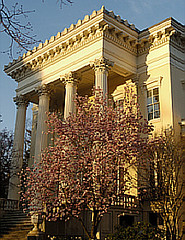 In the January 2009 issue of The MCA Advisory, Elliot Wehner and I published an article about a tour of John Work Garrett’s underground coin vault and Wayne asked me to share some of that experience with readers of The E-Sylum. I immediately recalled a discussion a while back in the E-Sylum about the private acquisition of coins from the Garrett collection prior to the auctions of the 1970s and ‘80s. I believed, as I’m sure many other numismatists have, that those auctions and private sales effectively liquidated all of the Garrett numismatic holdings at the Johns Hopkins University.
In the January 2009 issue of The MCA Advisory, Elliot Wehner and I published an article about a tour of John Work Garrett’s underground coin vault and Wayne asked me to share some of that experience with readers of The E-Sylum. I immediately recalled a discussion a while back in the E-Sylum about the private acquisition of coins from the Garrett collection prior to the auctions of the 1970s and ‘80s. I believed, as I’m sure many other numismatists have, that those auctions and private sales effectively liquidated all of the Garrett numismatic holdings at the Johns Hopkins University.Recently I met Earle Havens, the Curator of Rare Books at the Sheridan Libraries of Johns Hopkins (those interested in medals, particularly the Comitia Americana series, may know him from his previous work at the Boston Public Library), and I scheduled a visit with him to view the Garrett collection of numismatic books. I also viewed some documents relating to the Bowers and Ruddy auctions, as well as the original photographs from the catalogs, and this alone warrants a detailed article in a future issue of The Asylum.
Although I had visited the Evergreen House (once the home of two generations of the Garrett family) on several occasions in the past few years, I had never been able to view the underground vault where he stored his collection. Having lost a significant part of his coin collection in the Great Baltimore Fire of 1904, Garrett had a special fireproof vault built beneath his new library.
That extraordinary library, designed by Lawrence Hall Fowler, was completed in 1928 and was one of Garrett’s favorite places. The vault was built with a special dumbwaiter, so if Garrett wanted to view any coins he could simply tell a servant what number tray he wanted and it could be sent up. Garrett never even had to leave his chair!
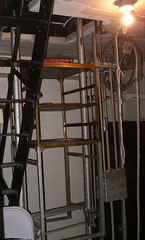 After Elliot and I had met with Earle, we were offered an incredible opportunity to see Garrett’s coin vault. Looking around the Fowler library and its priceless books, we never would have guessed that entry to the vault was made by rolling up one of the carpets and pulling up a few floorboards. To the right of the narrow staircase that led into the vault was the ingenious dumbwaiter that delivered coins to the main floor of the library.
After Elliot and I had met with Earle, we were offered an incredible opportunity to see Garrett’s coin vault. Looking around the Fowler library and its priceless books, we never would have guessed that entry to the vault was made by rolling up one of the carpets and pulling up a few floorboards. To the right of the narrow staircase that led into the vault was the ingenious dumbwaiter that delivered coins to the main floor of the library. The vault is composed of two cramped rooms. The first was lined with several safes of varying sizes, while the second was filled with gray archival boxes. As our pulses quickened, we knew we had to see the insides of the safes and boxes.
Our guide opened the first safe and, to our amazement, started pulling out trays filled with medals and tokens! Although there did not appear to be anything of significance, we were told that there are currently 1,665 medals stored inside the safes. Most likely these medals and tokens were not all from the Garrett collection and instead represented the combined holdings of the entire university.
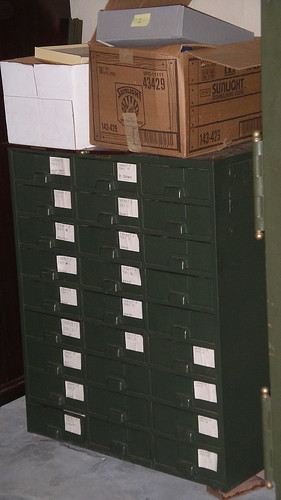 As it turns out, the contents of the gray archival boxes proved to be significantly more interesting. Inside perhaps hundreds of white envelopes were many of the foreign coins and medals destroyed by the Baltimore fire. Although some are melted beyond recognition, a quick peek into a few envelopes revealed a copper peace medal, identifiable by its “Peace and Friendship” reverse, joined to another blackened medal.
As it turns out, the contents of the gray archival boxes proved to be significantly more interesting. Inside perhaps hundreds of white envelopes were many of the foreign coins and medals destroyed by the Baltimore fire. Although some are melted beyond recognition, a quick peek into a few envelopes revealed a copper peace medal, identifiable by its “Peace and Friendship” reverse, joined to another blackened medal. I had assumed that all of these medals had been donated to the American Numismatic Society, but a large number remain in the Evergreen House.
It is an amazing experience to essentially walk in the footsteps of one of America’s greatest collectors (not just of coins, but of books, fine art, and more). Located in the middle of Loyola College in the northern part of Baltimore, the Evergreen House is just a short trip from the city’s famous Inner Harbor.
I should also mention that there is currently a student exhibition at the Evergreen House entitled, It’s a Man’s World: The Collections of the Male Garretts. I went back to the museum at the beginning of January, and I noticed that a few coins from the Garrett collection (on loan) were on display in the library, and the dumbwaiter was lifted into view.
The exhibit runs until March 31, which is just enough time for visitors to the Baltimore Coin & Currency Convention to check it out--and the entire Evergreen House for that matter!
MORE ON LITERATURE OF WWI CITY AND STATE MILITARY SERVICE MEDALS
Former American Numismatic Association librarian Nancy Green writes:They also have: Military Medals, Awards and Service Badges of Iowa by Kenneth C. Lewis (SH70.I6L4) and there is a new edition (2006) of Doug Boyce's State Medals for War Services.
A search in the library catalog with key words "service medals" yields a lengthy list including lots of foreign lists, but it might be worth checking.
MORE ON NUMISMATIC TRANSLATIONS
Dick Johnson writes:
John Sallay writes:
I didn’t study Latin, but my wife is a Latin teacher and she has helped me along to the point where I can sometimes figure out these inscriptions almost as well as she can. That’s not to say that I know the language, but rather that these inscriptions are almost like a sub-language and there are certain phrases and abbreviations that keep coming up.
As background, Latin words were not separated by spaces the way we separate words in English today. (The Irish were the first ones to do that). Often though, the Romans separated words and abbreviations with dots inserted between the words, and this helps. Also, the order of the words enhances the readability and sometimes affects nuances of meaning, but doesn’t change the meaning of a sentence written in Latin.
There are several common abbreviations, similar to the D.G. (meaning Dei Gratia, or By the Grace of God) on British coins that everyone just knew. For example, IMP stood for “Imperator” or emperor, M stood for Marcus and so forth. The point of the abbreviations was not so much that there was limited room on a coin, because they also did all of this abbreviating on gigantic monuments as well. It was a waste of space to spell out something that everyone knew, similar to the way we usually use USA instead of spelling it all out. As a result, the online Latin translators are essentially completely useless for this purpose. However, there is a group of Latin teachers who run a blog called LatinTeach and if you got involved in that, you might get more help than you bargained for:
Latinteach mailing list
Latinteach@nxport.com
http://nxport.com/mailman/listinfo/latinteach
Having said that, I find that if I type a complete Latin phrase on a medal into Google, it sometimes comes back with clues that the inscription is part of a famous quotation from Virgil or Horace or another famous writer. These references are particularly interesting because – just as the words are often abbreviated – the quotations are often abbreviated, too. Knowing the full quotation illuminates the true underlying motivation for using that particular quotation on the award medal.
Without going into more detail, take a look at a couple of medals from my collection on NeoCollect, both with obscure but very funny and ironic underlying meanings which are explained the descriptive text:
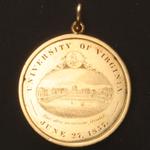 University of Virginia, Jefferson Society http://www.neocollect.com/item/34/
University of Virginia, Jefferson Society http://www.neocollect.com/item/34/ 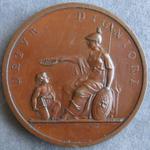 Blundell’s School, Keats Medal http://www.neocollect.com/item/1474/
Blundell’s School, Keats Medal http://www.neocollect.com/item/1474/ Dick Johnson adds:
This is particularly useful for such non-uniform items as medals. They can be identified as to recipients' names or other inscribed lettering. John's specialized topic of School Medals is an excellent example (and perhaps was the inspiration for the web site's creation). With inscribed recipient's name each medal is unique for that year. This information is quite useful for other collectors who have similar items in their collections.
The two medals John cites are examples where the Latin inscriptions add tremendous interest and collector lore to the individual piece.
Check out John's web site. You may want to use his free web site for your own collection.
Renee Shomaker writes:
Does anyone reading this, perhaps with a 3,000 IQ who knows many languages, would like to start a web site that would record coin and medal inscriptions and who can provide their meaning in plain text English? You would earn the everlasting approbation of those of us who toil in the numismatic field and feel stumped by the mystical lettering. We could feed you a lot of these for your translation, interpretation and estimation.
I am currently in development of a numismatic web site that I would be more than happy to integrate this information into (or build a separate site for) and help research the unknown inscriptions. A collaborative effort here would be wonderful - I know of many others who would also be willing to contribute their knowledge. Something like this would be an invaluable resource for all, and I would be glad to assist in the effort!
You can reach me at admin@numishub.com
John Lupia writes:
It could simply be a corporate name OPUS AG LLC, in Purchase, New York, where AG means Advisory Group. I hope you appreciate the difficulty and complexity of the problem when inscriptions are taken out of context.
Tom DeLorey writes:
John Isles writes:
MORE ON NEW ZEALAND AND AUSTRALIAN TOKEN REFERENCES
Martin Purdy of New Zealand writes:
Richard Robinson of Melbourne, Australia writes:
For more information on the history of Stokes, see: STOKES: ONE & A HALF CENTURIES IN BUSINESS 1856 – 2006 & ON (http://www.stokesap.com.au/downloads/Stokes-150years.pdf)
MORE ON THE SMITHSONIAN'S CHARLES BARBER PUERTO RICO SKETCH
Last week I published an image of Charles Barber's sketch of a coin design for Puerto Rico. David Lange writes: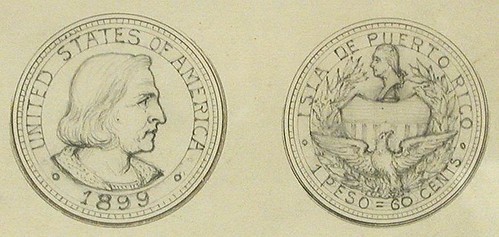
QUERY: 1695 BRAZIL PATTERN JACQUES SCHULMAN SALE PRICE REALIZED SOUGHT
Alberto Paashaus writes: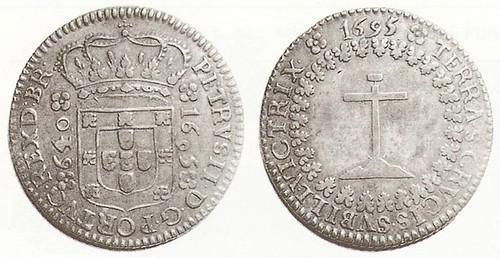
It is the first Brazilian pattern, struck in 1695, and I was trying to find how much the coin was sold for. On the Judice dos Santos, the lot number is 1788 and in the Roland Michel Sale the number was 19, with an estimate of 25,000-30,000 swiss francs. I wrote an article about this rare coin and some people asked me about the auction prices, which I was trying to find since then, but without much luck.
BRAZILIAN NUMISMATIC BIBLIOGRAPHY
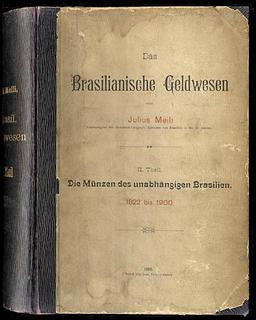

Alberto adds:
To view the bibliography, see: Bibliografia Numismática Brasileira (http://www.forum-numismatica.com/viewtopic.php?f=48&t=21275)
LOVE TOKENS INSPIRE COMPOSER KATS-CHERNIN
Dick Doty forwarded the following note from Peter Lane of Australia who writes:CHALLENGE COIN USAGE
Two years ago, I attended my first MPCFest in Port Clinton, Ohio. After over 50 years of travelling to coin shows (including ANA and CNA Conventions), it became my all-time favourite show (it is sometimes hard to explain why, but if you come to the next one, you can find out for yourself).
They don’t tell you anything, but at one of the organized dinners, everyone held up their MPC Challenge Coin…except me. I felt obligated/shamed into/volunteered to buy the refreshments (that’s beer to those of you who are not in the habit of writing press releases for coin shows where no mention of alcohol is ever mentioned) at the bowling that followed the dinner.
Last year, I again attended. Again, everybody pulled out their MPC Challenge Coin…except me. I bought the beer, knowing fully well that this time I had my Challenge Coin tucked away safely in a 2x2 holder in my wallet.
When you read that I again “forgot” my MPC Challenge Coin and had to buy the refreshments at the April 16 to 19 MPCFest, just remember that sometimes we care more about a numismatic object not getting scratched and the fun and fellowship that buying a round brings!
Centuries ago forerunners of today's challenge coins were used to verify membership in secret societies; where such societies were outlawed the penalty for failing to prove one's membership could be as harsh as death, since a nonmember could be a snitch. So in comparison, buying a round of drinks, especially for one's friends as John notes, isn't so bad.
The police organizations handing out "challenge coins" to citizens are using them more like medals to recognize good behavior. -Editor
MOVING SALE
Numismatic literature for sale by collector
9,000 numismatic auction catalogs
1,000 numismatic books
Hundreds of different numismatic journals
Will provide very attractive pricing for sales of large lots.
Email Chris Hoelzle at choelzle@cox.net for lists.
THE "SMOKING LIBERTY" QUARTER VARIETY
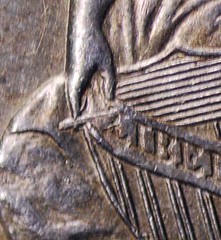 In July of 2008 Ken Potter wrote an extensive and lavishly illustrated article reporting on the discovery of a most interesting and eye catching die variety found on an 1857 Liberty Seated Quarter dollar. It has since been embraced by the numismatic community and dubbed the “Smoking Liberty” variety.
In July of 2008 Ken Potter wrote an extensive and lavishly illustrated article reporting on the discovery of a most interesting and eye catching die variety found on an 1857 Liberty Seated Quarter dollar. It has since been embraced by the numismatic community and dubbed the “Smoking Liberty” variety. Potter reported the variety was first spotted by collector John O’Hare who showed it to friend and fellow collector, Saverio Barbieri, in the early part of 2000.
So smitten by the variety was Barbieri he began an eight‐year search for more specimens. After searching an estimated 30,000+ Liberty Seated quarters of that date on eBay and shows across the country Barbieri found a total of 28 specimens bringing the known population to 29 pieces.
Barbieri approached DGS senior grader and well known variety specialist, Mike Ellis, if DGS was willing to attribute the coin as the “Smoking Liberty” variety. Having seen and attributed one already at DGS, Ellis examined all 28 of Barbieri’s specimens agreeing to place the attribution on the holder for the raw specimens submitted. Ellis says he has seen 29 different specimens..
TANZANIAN BANKNOTE SHIPMENT GOES ASTRAY
The This Day report said that the shipment had started from Germany and arrived in Tanzania via a stopover in Doha of Qatar.
The newspaper quoted unidentified sources from Tanzania's central bank, Bank of Tanzania, as saying that the banknotes had been minted in Germany and had been all in the 10,000 Tanzanian shilling denominations.
The 10,000-shilling banknote is the largest denomination banknote now in circulation in the country.
To read the complete article, see: Freshly-minted banknotes disappear at Dar es Salaam airport (http://news.xinhuanet.com/english/
2009-03/20/content_11042245.htm)
CARVERS AND COLLECTORS: EXHIBIT OF ANCIENT GEMS AT THE J. PAUL GETTY MUSEUM
Harry Waterson writes: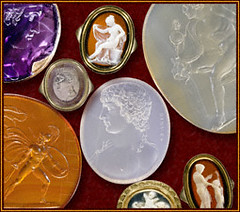 The beauty of carved gemstones has captivated collectors, connoisseurs, and craftsmen since antiquity. Precious markers of culture and status, gems were sought by Greek and Roman elites as well as modern monarchs and aristocrats.
The beauty of carved gemstones has captivated collectors, connoisseurs, and craftsmen since antiquity. Precious markers of culture and status, gems were sought by Greek and Roman elites as well as modern monarchs and aristocrats.This exhibition features intaglios and cameos carved by ancient master engravers along with outstanding works by modern carvers and works of art in diverse media that illustrate the lasting allure of gems.
The exhibition includes gems by several ancient master carvers, including Epimenes, Solon, Dioskourides, and Gnaios. These carvers sometimes signed their works, but the majority of classical gems are unsigned. With careful examination, anonymous intaglios and cameos can be attributed to known masters based on characteristics they share with signed gems. In antiquity, gems were engraved with personal or official insignia that, when impressed on wax or clay, were used to sign or seal documents. Carved gems were valued not only for their distinctive designs, but also for the beauty of their stones, some of which were believed to have magical properties.
From the Middle Ages to the 19th century, rulers, nobles, and wealthy merchants sought and traded classical gems, and carvers produced replicas and forgeries.
 Sumptuous engraved catalogues of gem collections were published in the days before photography. Like the gems they illustrated, these volumes functioned as luxury objects. The engravings in these books sometimes improve upon the already excellent carving of the gems themselves.
Sumptuous engraved catalogues of gem collections were published in the days before photography. Like the gems they illustrated, these volumes functioned as luxury objects. The engravings in these books sometimes improve upon the already excellent carving of the gems themselves.Louis Philippe d'Orléans (1725–1785), the great-grandson of King Louis XIV of France, published his gem collection in an elaborately engraved volume dedicated to his cousin King Louis XVI. The frontispiece, shown here, depicts the duke himself and also represents the superiority of gems over other art forms: in the foreground, two cupids inspect the contents of drawers pulled from a large gem cabinet, while symbols of architecture, sculpture, and painting are relegated to the upper right and lower left corners.
For more information on the exhibit, see: Carvers and Collectors: The Lasting Allure of Ancient Gems (http://www.getty.edu/art/exhibitions/gems/index.html?cid=egetty090)
As noted above, there are many great books covering collections of gems, and perhaps therein will be found interesting information for the numismatic researcher. I would encourage E-Sylum readers living near Los Angeles to check out the Getty exhibit.
Can anyone point us to a good recently-published reference on gems? -Editor
QUICK QUIZ: NAME THIS FAMOUS BIBLIOPHILE
Thanks to Larry Mitchell whose email inspired this quiz. Who can tell us about the famous bibliophile pictured here?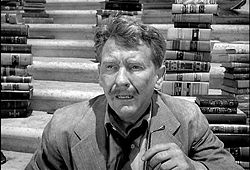
FEATURED WEB PAGE: MEDIEVAL COINAGE / EARLY DATED COINS
This week's Featured Web Site is Sean Breazeal's Medieval Coinage / Early Dated Coins site.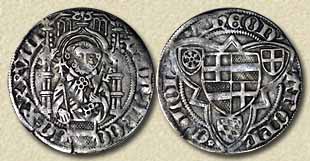
www.medievalcoinage.com/
